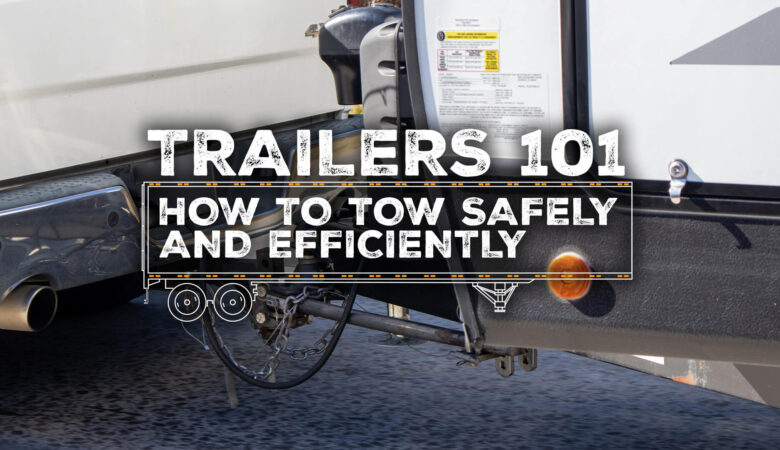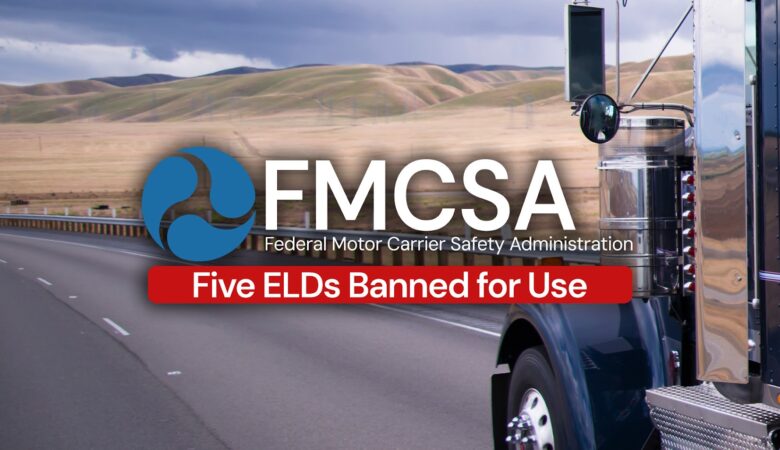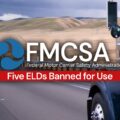So far, 2025 has seen a variety of new commercial fleet and trucking regulations. With new safety requirements, environmental protection mandates, and advances in technology affecting the trucking industry this year, it is important for truck drivers and fleet owners to stay informed and prepared. In order to avoid fines and penalties, maintain healthy environments, and improve operational safety, compliance with these rules and regulations is crucial. In this blog from Mytee Products, we will discuss the 2025 trucking regulations you should know to stay safe and efficient on the road.

Safety Enhancements with Automatic Emergency Braking (AEB)
In an effort to increase road safety and reduce the risk of accidents, the Federal Motor Carrier Safety Administration (FMCSA) has suggested a mandate that would require all heavy commercial trucks to be equipped with Automatic Emergency Braking (AEB) systems. Beginning as early as spring 2025, the aim of this new rule is to utilize the advanced sensors in the AEB systems to detect potential hazards and apply the brakes automatically if needed, therefore decreasing the risk of rear-end collisions.
Affected Vehicles
If this regulation goes into effect, it will apply to heavy trucks from Classes 3 to 6, which weigh between 10,001 lbs and 26,000 lbs. The rule would also affect Class 7 and 8 trucks, and these vehicles weigh over 26,000 lbs.
Compliance Timeline and Costs
Due to the truck maintenance required by this proposed mandate, the FMCSA has provided a timeline for truck operators and fleet owners to comply. Classes 3 to 6 vehicles will have 3 years to adjust, while Classes 7 to 8 will have 4. Note that AEB installation may cost anywhere from $1,500 to $3,000 per vehicle. This can be a substantial cost for smaller fleets, so it’s important to stay updated on this rule and how it may affect your resources.
Steps to Prepare
In order to prepare for the AEB regulation, fleet owners should begin checking for AEB systems when making new truck purchases. It also may be helpful to add AEB training to your fleet’s safety programs to ensure drivers have a clear understanding of these systems and how they work.
Also Read: Oversize & Wide Load Trucking Regulations Guide in 2025
Speed Limiter Rules for Heavy Vehicles

In May 2025, the FMCSA plans to propose a rule that will require speed limiters for heavy trucks. This would cap the speed of the trucks and ideally reduce the number of accidents caused by excessive speeding, but there is still some uncertainty surrounding the specific maximum speed limit.
Affected Vehicles
The FMCSA intends on requiring these speed limiters in commercial vehicles weighing over 26,000 lbs, though they are still unsure about the logistics of testing and enforcement.
Cost Implications
Speed limiter installations can greatly affect operational costs for truck drivers and fleet owners, as it may cost $500 to $1,500 for each vehicle.
Steps to Prepare
Mytee recommends following FMCSA updates closely for information on new regulations to avoid receiving fines. Additionally, fleet owners should begin preparing to make route adjustments and alter operational budgets, as this rule may cause longer delivery times to accommodate the speed limits.
Eliminating Emissions with Advanced Clean Truck (ACT) Rules
The Advanced Clean Truck (ACT) rule was adopted in June 2020 by the California Air Resources Board (CARB). The ACT regulation requires manufacturers of medium- and heavy-duty trucks to increase production and sales of electric or hybrid vehicles. The goal is to increase zero-emission vehicle sales by 2035.
Affected States
While the ACT rule was created and enacted in California, it has since expanded to many other states across the U.S.—including Colorado, Maryland, Massachusetts, New Jersey, New Mexico, New York, Oregon, Road UIsland, Washington, and Vermont. However, even though this regulation is currently being enacted in these states, the implementation and enforcement vary depending on the region.
Dates Effective
The ACT rule has been fully effective in California since the beginning of 2024. The more recently participating states have different compliance timelines. Massachusetts, New Jersey, New York, and Washington began enforcing the ACT regulation on January 1st, 2025. Oregon and Vermont will be expected to comply by 2026, so fleet owners in these areas should begin preparations as soon as possible.
Implications for Fleets
While the ACT regulations mainly impact manufacturers of commercial vehicles, they also have implications for fleets in the complying states. Fleets may experience reduced vehicle availability and increased costs when purchasing new zero-emission vehicles.
Steps to Prepare
To successfully prepare for compliance with ACT rules, we recommend that fleet owners begin assessing their ability to integrate as many zero-emission vehicles as possible into their fleets. It is also important to consider your budget and stay updated on state-specific timelines near you.
Also Read: How Much Does Water Truck Maintenance Cost in 2025?
Advancing California’s Advanced Clean Fleet (ACF) Regulation
While ACT rules primarily focus on commercial vehicle manufacturers, California’s Advanced Clean Fleet (ACF) regulation applies to fleets and fleet operators. This rule mandates medium- and heavy-duty fleets to transition toward electric and hybrid vehicles. Similar to ACT regulations, the goal of this mandate is to move toward more zero-emission vehicles in fleets by 2035.
Affected Fleets
This rule will require compliance from drayage fleets, municipal and state-owned fleets, and fleets that include 50 or more commercial vehicles.
Dates Effective
The ACF rule is still pending approval by the Environmental Protection Agency (EPA), which is necessary for it to go into full effect. This could be delayed due to changing administrations or legal struggles, so for now, the official date of enactment is still undetermined.
Steps to Prepare
Due to the uncertainty of this regulation, it is recommended that fleet operators stay informed on the EPA’s approval as updates become available. In the meantime, you should begin making plans for how you will comply with this rule.
Final Notes for Fleet Managers
For fleet operators looking to stay ahead of the curve on new and impending regulations, here are some final tips from Mytee Products:
- Stay Updated: In order to avoid fines and maintain the safety and efficiency of your fleet, make sure to keep up with updates from the FMSCA, EPA, and your state’s laws.
- Plan Your Finances: Begin making budget plans to cover the costs of new zero-emission vehicles and the driver training and maintenance costs that will accompany them.
- Implement Training: With new technologies and operational rules come new challenges for fleet operators and truck drivers, so it’s important to implement training programs where necessary.
- Create Manufacturer Relationships: Building relationships with commercial vehicle manufacturers can help you gain knowledge on advanced trucking solutions and how to stay compliant with newer regulations.
Staying compliant with new and upcoming fleet rules will benefit your fleet’s safety and efficiency despite the challenges of implementation. So, keep these tips in mind as you continue hauling through 2025, and check out more helpful blogs from Mytee Products to stay in the know.









